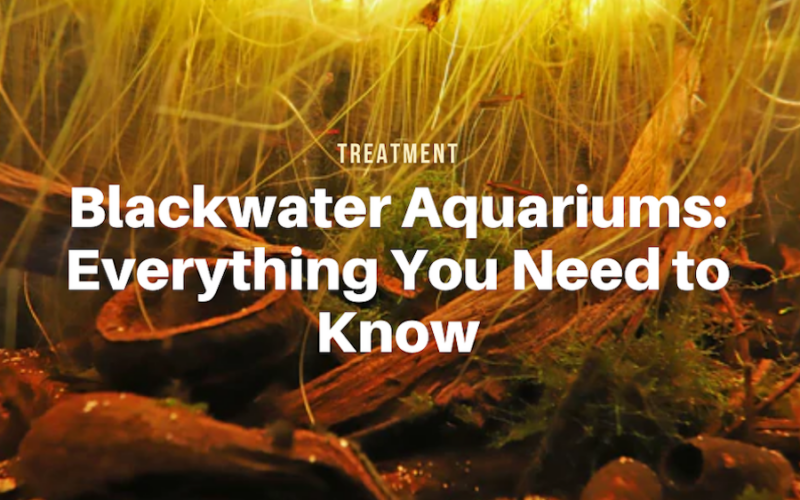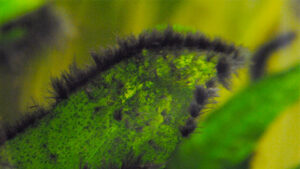Aquariums with crystal-clear water and colorful fishes are very common but many aquarists find them a little bit tedious. Blackwater aquarium offers a new type of challenge for hobbyists with its tea-colored water, abundant plants, and leaf litter.
It may sound a little mysterious but blackwater aquariums are indeed interesting. Simulating blackwater in the Amazon River requires some extra time and effort to keep the tank in a good shape while controlling the decomposition inside.
Creating blackwater aquariums isn’t a simple task. But with a little know-how, you’ll be able to build one to please your inner aquarists. Be sure to consider several aspects like safety botanicals, acidity level, fish options, and many more.
Here we’ve put together everything you need to know about blackwater aquariums, including how to recreate one and its plus-minus. If you want to bring this aesthetic fish tank home, scroll through the page.
What Is a Blackwater Biotope?
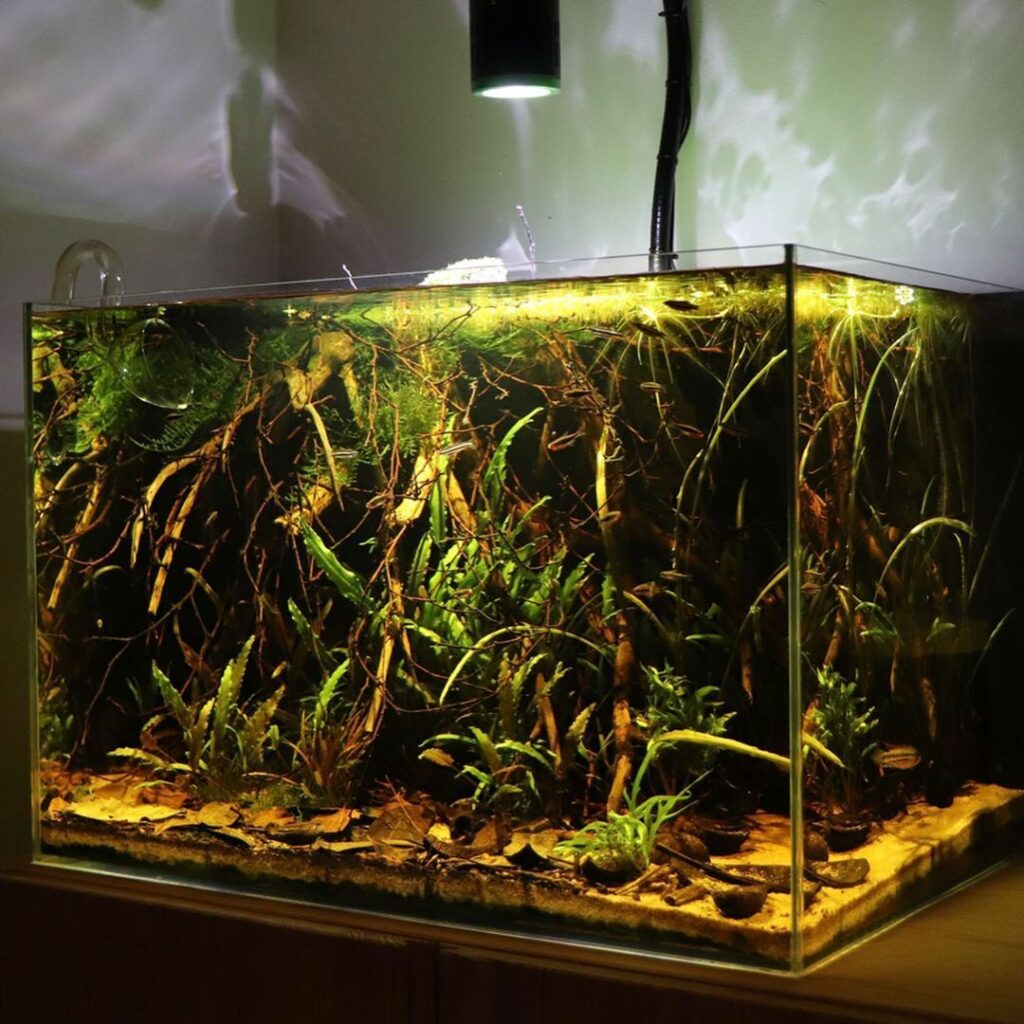
Blackwater aquariums, also known as blackwater biotopes, are a new favorite among aquarists. It is an aquarium setup that displays gloomy and cloudy-looking water inspired by the natural habitat in the deep of the Amazon.
Though many aquarists find them to look dirty and unattractive, there are interesting things about them. Blackwater habitat copies not only the physical characteristics of the Amazon but also a natural substance. That means the tank water will have low minerals and aquascaped to make it look real.
There are several elements commonly used to aquascape a blackwater biotope, such as aquarium wood, aquatic plants, and even organic matter that decompose like leaf litter. Over time, these matters will age and release natural acids and other substance that makes the water darker.
This also affects the acidity level in the aquarium. Most blackwater biotopes run below pH 6 but you can keep it around 6.5 to 7.0, especially if you’re not experienced with tank water chemistry. Balance the carbonate hardness between your tap water and pH in the tank.
With so many plants and organic matters loaded into the tank, the main task of aquarists is to maintain the habitat and control the decomposition. That’s how you can provide a healthy and friendly environment even for acid-loving fish.
In nature, blackwater habitats commonly occur when the water level rises or when a flood happens. Leaves, wood, fruits, and seeds get into the body of water and start to decay. The combination of the chemical and biological processes causes the water to appear more yellowish and darkish.
In the case of blackwater aquariums, freshwater fish can be added to add more colors and visual attraction. They also contribute to providing the plants with carbon dioxide and nutrients that create a balanced ecosystem.
Fish Options for Blackwater Aquariums
Finding the fish that will thrive in an acidic blackwater habitat can be tricky. While some types of fish can’t survive in an acidic environment, others will grow healthy and happy. There are more than 200 species of freshwater fish that inhabit natural blackwater habitats, so you can pick one of them.
It’s worth noting that some species can grow large. Before selecting the right fish, be sure to do little research on the characteristics of each species and if they are a good fit for your blackwater aquariums. And if you need a little reference, here are a few freshwater fish for blackwater biotope.
1. Tetras
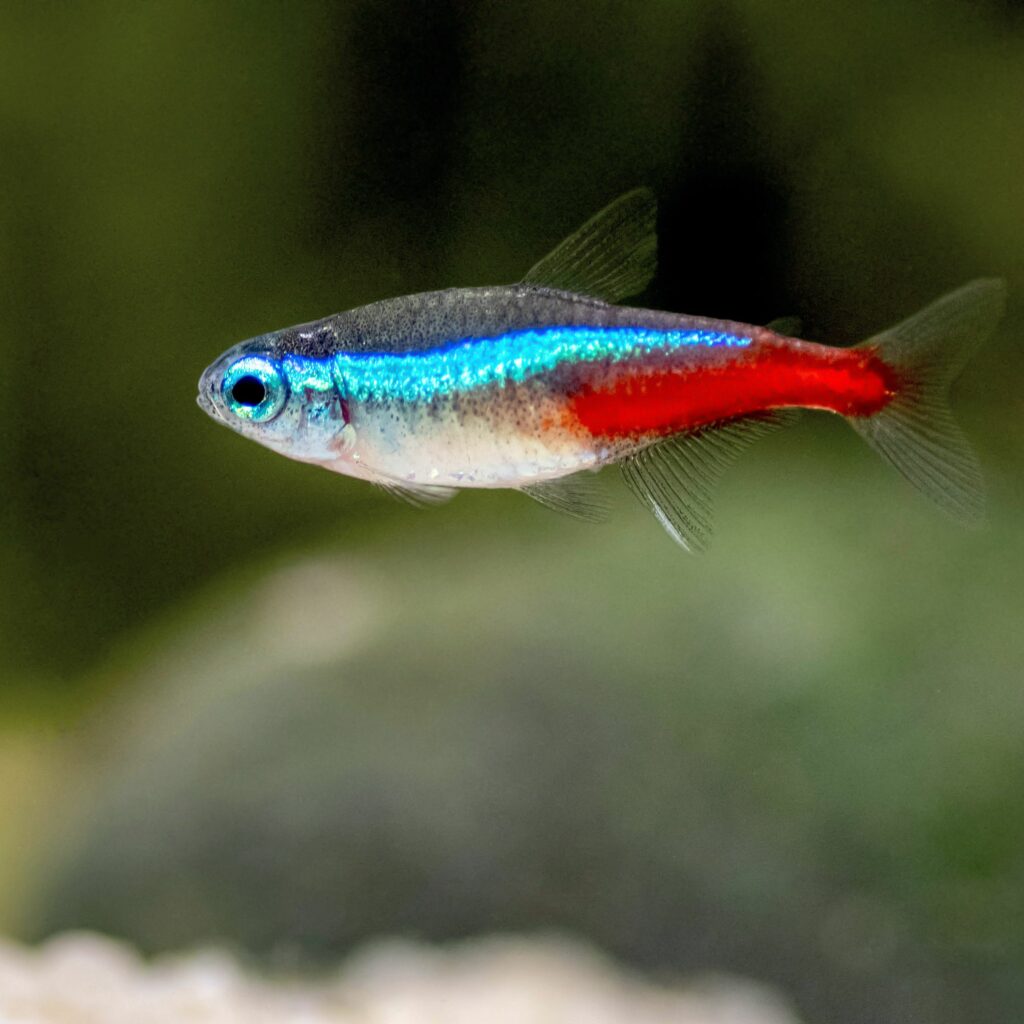
Tetras are schooling freshwater fish that is native to South America and Central America. Some kinds of tetra fish like cardinals and neons can be a great addition to your blackwater aquarium, thanks to their active movement and attractive coloration.
2. Brycon
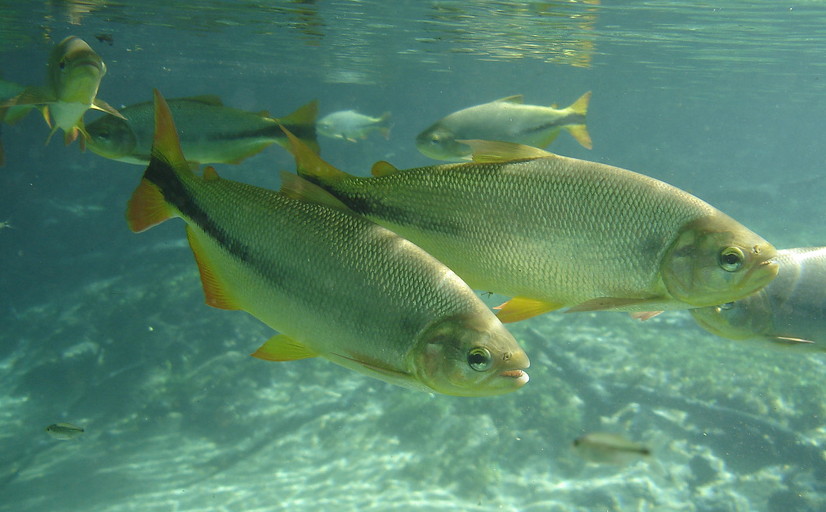
Brycon is a species of freshwater fish commonly found in South America. They can grow quite large, so be sure your fish tank can be a great environment for the fish.
3. Firemouth Cichlids
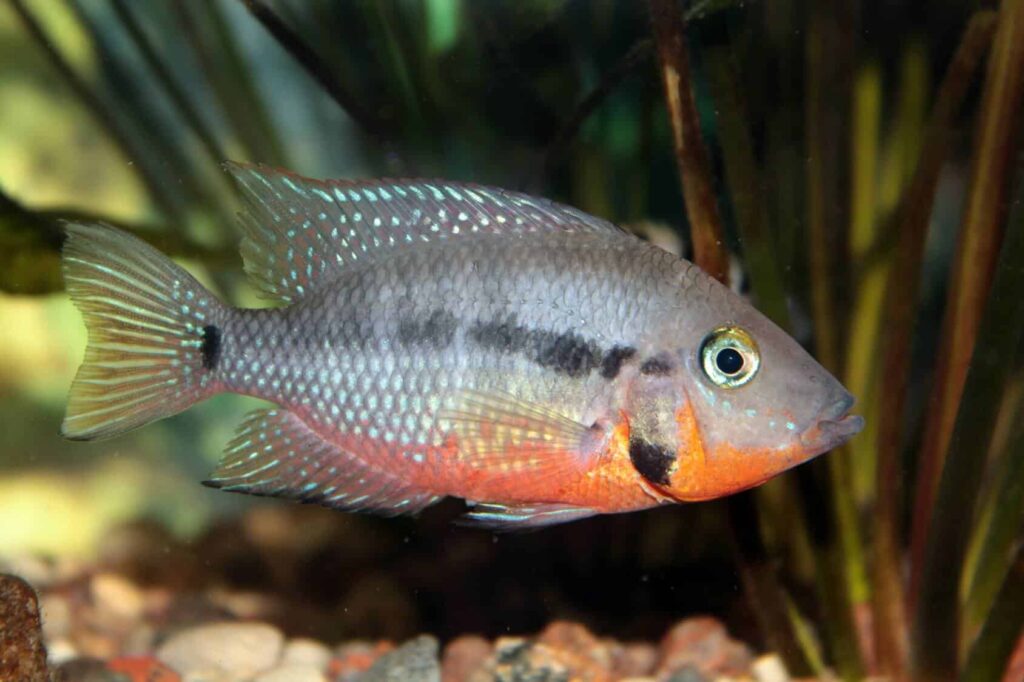
Firemouth cichlids are native to rivers in Central America. They have attractive coloration with and they can grow as large as 7 inches. They are ideal for a community aquarium and can be mated with fish of similar size.
4. Discus
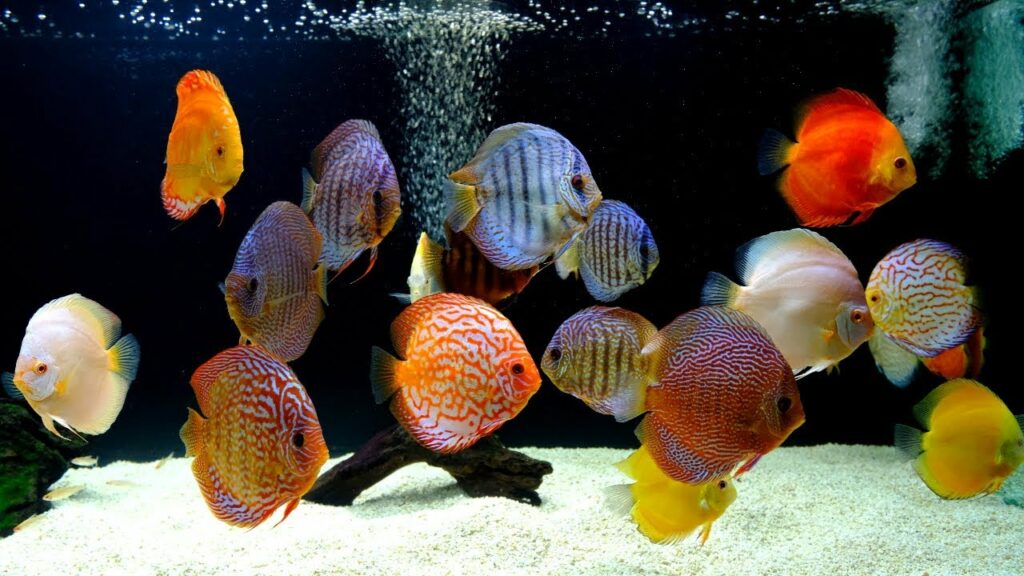
Discus helps add colors to your blackwater aquariums. They come in different colorations and striping that will make your tank look more adorable.
5. Apistogramma
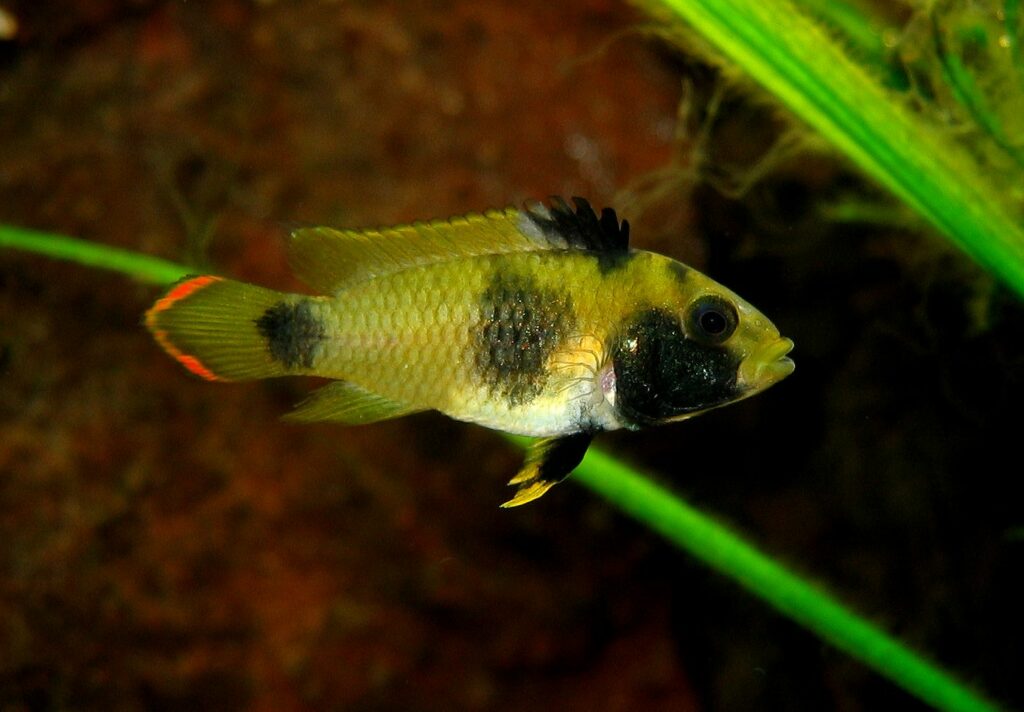
Also known as dwarf cichlids, Apistogramma is curious freshwater fish with vibrant colors. There are more than 90 species to choose from, allowing you to pick one that suits your aquarium.
Live Plant Options
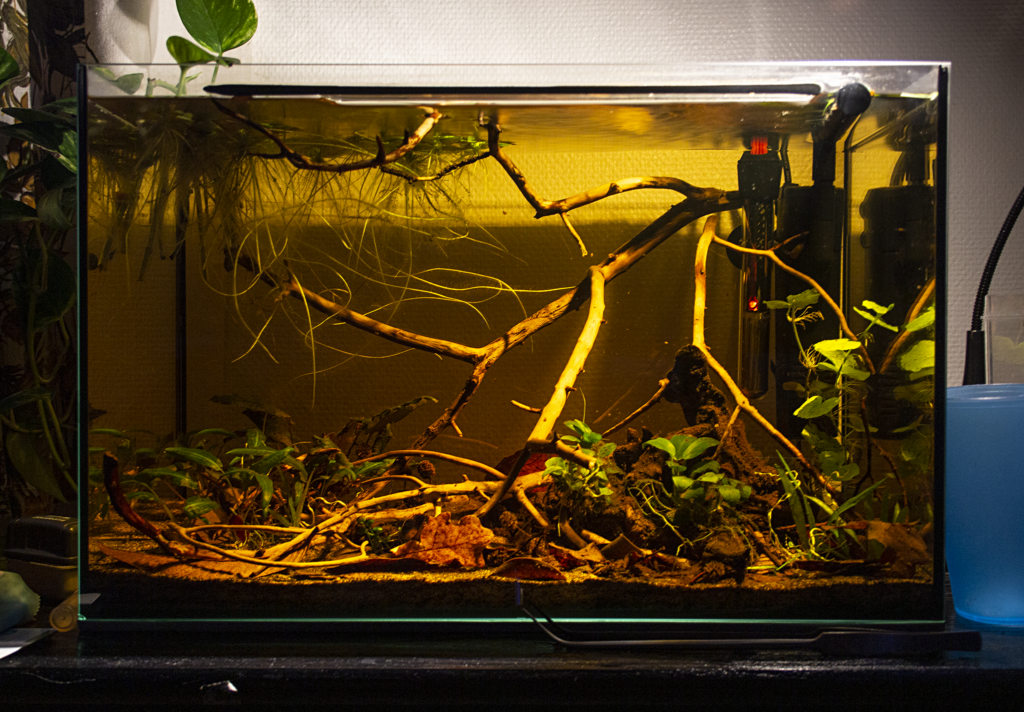
Blackwater aquarium provides a unique environment in that not all types of plants can thrive. The most suitable live plants for this kind of aquarium are ones that don’t require high light intensities. Opt for low-light types and shade lovers and they will be fine in your fish tank.
If you need a quick reference, the following list should help you out:
- Java moss
- Water sprite
- Java fern
- Anubias
- Cryptocoryne
- Taxiphyllum
To make your plants grow healthy and happy, you may want to add liquid fertilizer. Fish naturally provides carbon dioxide and natural fertilizer from their waste but it is not sufficient. Thus, use a liquid fertilizer that contains iron to make them lush.
Also read: Recommended red aquarium plants for your tank
How to Make a Blackwater Aquarium
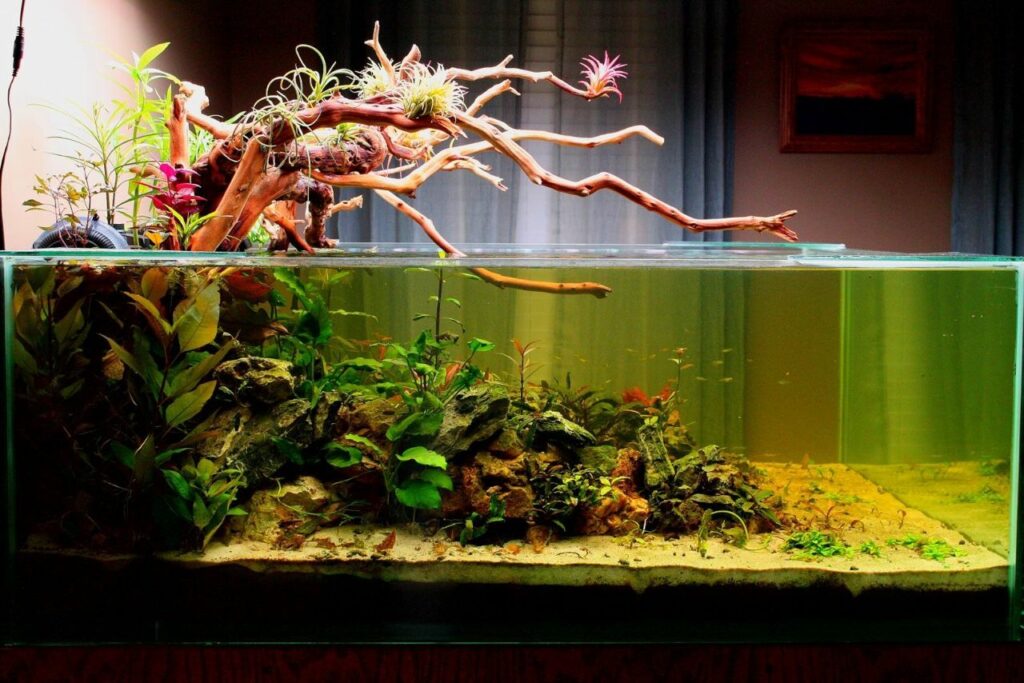
Recreating an Amazon water habitat can be daunting, especially if you are new to blackwater biotopes. But if you can’t help to own this amazingly unique freshwater aquarium, the following steps should make your project a little bit easier.
1. Choose an Aquarium
Before setting up your blackwater aquarium, find the perfect size tank that will mimic the characteristics of blackwater habitats. A medium to a large tank with 10-500 gallons should be perfect. The larger aquarium you use, the more room you have for the heater and filter.
If possible, you can put a dark background on the glass surface. This helps you hide the heater and filter as well as add a stronger sense of deep-water habitat in nature.
2. Set up the Tank
This is actually the most exciting yet hardest part when creating a blackwater aquarium. Setting up the tank can be time-consuming but the result is worth the effort. You can start by adding sand or gravel to hold living aquatic plants.
For creating a more natural touch to the river bottom, an organic potting mixture will do a great job. You can also add decoration with rocks that don’t release calcium and alkaline.
And if you would like to add driftwood, be sure it meets the chemistry of your water. The most commonly used type of driftwood is Manzanita. Not only are they visually attractive, but they can also blend well in your blackwater biotope.
When you set up the tank, you may want to install proper lighting. Experiment with which lighting can create a naturally dim effect to give you the best appearance of deep-water habitat.
3. Add Blackwater
Now that your aquarium setup is ready, it’s time to add blackwater to the biotope. The dark brownish or yellowish color of the water contains strong tannins released by decayed leaves. You can either make your own blackwater or purchase store-bought blackwater additives.
If you’d prefer natural blackwater, use different types of leaves as a natural colorant. Many aquarists use different kinds of oak tree leaves, such as sessile oak, turkey oak, and red oak. These leaves decay slowly, giving you more time before replacement.
But if you can’t find any oak leaves, other leaves work well to provide your aquarium with tannin. The leaves include dwarf magnolia, Japanese maple, Indian almond, and alder cones.
There are no rules on how many leaves you can put into the tank. You may prefer creating a dense floor to mimic the natural blackwater.
4. Add Inhabitants
As aforementioned, not all animals are suitable for blackwater biotopes. It may take some extra time and effort to select plants and animals that are capable of adapting to the environment. Make simple research on which animals and plants will thrive in your Amazon-inspired blackwater aquariums.
5. Maintenance
Once your blackwater biotope has been set and inhabitants have been added, maintenance keeps your aquarium in a good shape. Water maintenance includes pH and kH tests to make sure if their levels are too high or too low for the inhabitants—the ideal pH is between 4.5 to 7.
For accurate testing, use specific test kits like nitrite and ammonia test kits, pH test kit, and water hardness test kit. The test should be conducted at least twice a week.
Changing water helps keep the condition of your aquarium. Use only de-chlorinated water to ensure your pets are not posed health risk. Many seasoned aquarists leave the water for a few days before putting them into the tank.
Things to Consider When Creating Blackwater Aquariums
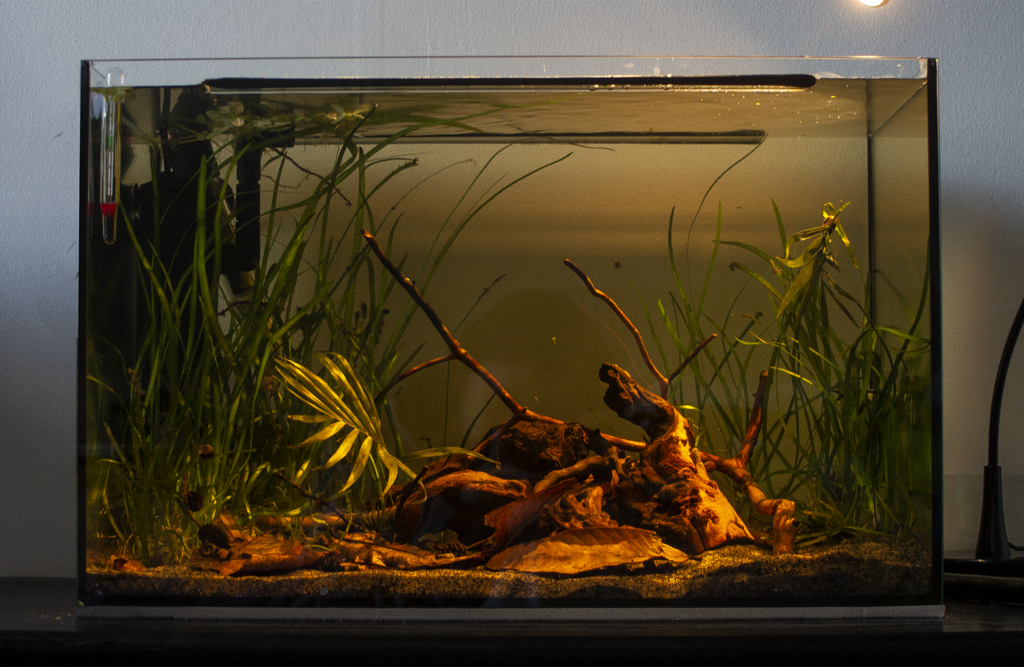
Are you interested to recreate a deep-water environment of the Amazon in your freshwater fish tank? Getting to know the steps and inhabitant options is not enough, especially if you don’t want to make mistakes while doing the project. Here are several things to consider when making a blackwater biotope.
1. Substrate Choices
Substrate layers serve to hold aquatic plants firmly. Since you are adding living plants, consider using fine gravel instead of pouring sand to the bottom of your tank. This kind of substrate helps to anchor plants and provides a root zone.
Opt for dark-color gravel to create strong deep-water nuance in the aquarium. Alternatively, you can also use an organic potting mix to make it look more natural.
2. Plant Choices
Be careful when choosing plants for your blackwater biotopes. Not all aquatic plants thrive in a blackwater environment because it doesn’t receive much light—even though it has more shades than a conventional freshwater aquarium.
For this reason, avoid aquatic plants that require high light intensities. Epiphyte plants that attach to wood are the best choice for blackwater biotopes for they don’t need much light and love shaded areas.
3. Lighting
Lighting is an essential element in the blackwater aquarium. Simulating the real blackwater biotope, your aquarium should be dim. Your lighting choice heavily depends on the type of plants you want to bring into the tank. If you don’t use live plants, most types of aquarium light will do great.
A White LED fixture, for instance, will create light ripples that look like a sunbeam that passes through the forest trees. You may also opt for a fixture with the ability to adjust the color spectrum so you can optimize the color of your fish.
4. Boiled Leaf Litters
Tannins naturally released by decayed leaf litters create a yellowish color in the water. But the natural process may take a month or two. If you don’t have enough time, simply boil the dried leaves for 1 hour to achieve the desired color.
When you boil leaves, they release tannin faster than soaked leaves. Not to mention they sink faster to the bottom, allowing you to see the result quicker.
5. Heater
Another thing to consider when creating a blackwater biotope is the heater. A modest submersible heater will work great in your blackwater aquarium. This tool helps maintain the water temperature between 75- and 80-degree Fahrenheit.
6. Filtration
Though you try to mimic the Amazonian natural habitat, it doesn’t mean you can let debris and impurities build up in the tank. Use mechanical filter media like sponges and filter cartridges to capture debris. Be sure to replace or clean these media monthly.
However, it’s strongly recommended not to use activated carbon. This filter media removes humic substances that you need to simulate the deep-water environment. If you really want to use it, make sure it isn’t more than a week.
Read also: Is it okay to put betta fish in a vase or bowl?
Blackwater Aquarium Pros
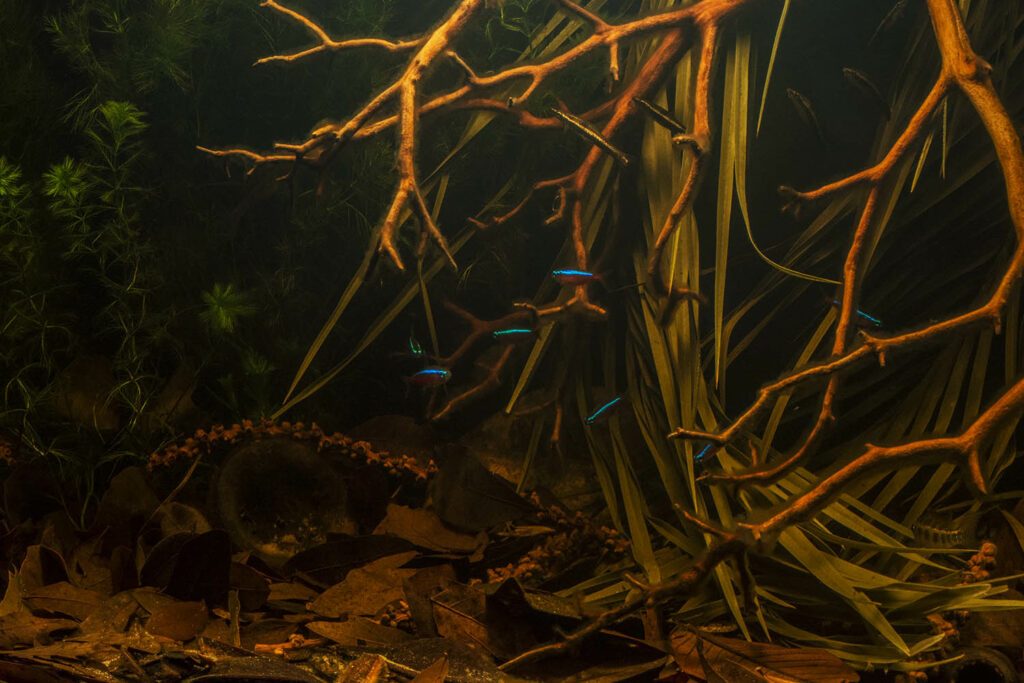
Blackwater aquariums are undoubtedly a new favorite among aquarists. Not only are they unique, but blackwater biotopes also offer challenges you can’t find in a clean, conventional aquarium. Here are several good things you’ll find from Amazon-inspired blackwater aquariums.
1. Distinct Appearance
Simulating a natural underwater habitat in Amazon, the blackwater aquarium comes with a totally distinct appearance. Thanks to yellowish-darkish watercolor, leaf litters, rotted driftwood, and other elements. While some aquarists think they are dirty, unclean, and nasty, tannin-stained water is clean.
2. Eliminate Bacterial Infections
It is believed that tannins have natural benefits for fish–this substance works effectively to address bacterial issues in an aquarium. Blackwater biotope uses tannin-stained water, which means there are plenty of tannins to eliminate bacterial infections.
On top of that, acidic water has the ability to kill off parasites and deadly microorganisms. Some sources mentioned that it also has antifungal properties that help keep your pet thrive in captivity.
3. Lower Water Hardness
Some leaves release humic acid when they decompose. These acids have the ability to lower the level of pH and KH by working against carbonate hardness. That means you can provide a friendly environment for acid-loving freshwater fish.
4. Promote Breeding
Concentrated tannin with leaf litter mimics the natural condition when some species of the tropical fish breed. Your blackwater aquarium is filled with dried leaves and yellowish water, it helps promote the instinct of the fish to breed.
5. Provide Food for Shrimp
Blackwater biotope is suitable for shrimp and fries to thrive. As the dried leaves decay, there are abundant microorganisms known as paramecium and infusoria. Fry and shrimp feast on these microorganisms after they hatch, allowing them to grow faster.
Blackwater Aquarium Cons
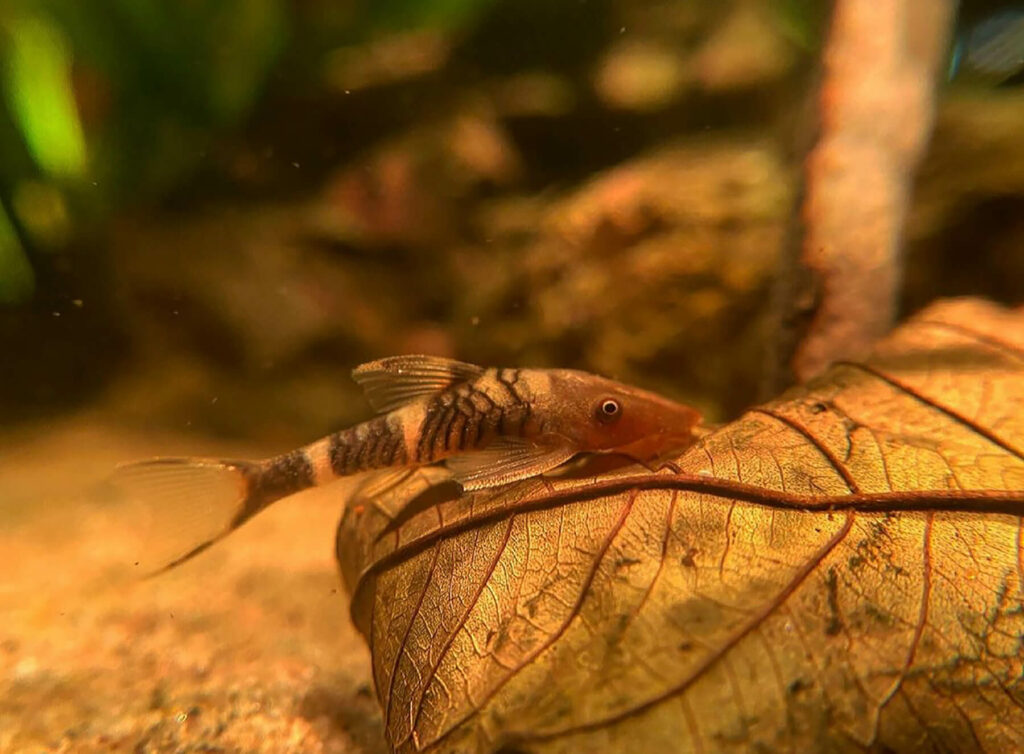
The planted aquarium offers a lot of good things, but there’s a catch. It has a number of cons that you may want to consider before having one.
1. Require High Maintenance
Aquarists who don’t have enough time to pay extra attention to their freshwater fish tank should think thousand times before making a blackwater biotope. Water management is essential to maintain environmental stability and water condition.
Not only does it require a regular cleaning schedule, but bi-weekly tests on pH and KH should also be conducted to monitor water chemistry, including the acidity and carbonate hardness. Unluckily, not all aquarists can stick to the schedule.
2. Susceptible to Acidosis
When pH drops significantly, acidosis may occur in your fish. This condition can result in damage to the skin, gills, and internal organs. Highly acidic water also shuts down denitrifying bacteria that convert toxic ammonia into harmless nitrate. That means you need chemical material to remove ammonia.
3. Not Suitable for Beginners
The fact that the blackwater aquarium requires extra maintenance makes it less suitable for beginner aquarists. You need to have comprehensive knowledge of water acidity, water hardness, how to add live plants to an acidic environment, and others.
In conclusion, the blackwater aquarium is an interesting type of freshwater aquarium that offers challenges and uniqueness. If you are seasoned aquarists with years of experience in aquarium keeping, it can be such a refreshment. But if you are new to this, blackwater biotope could be a nightmare.
